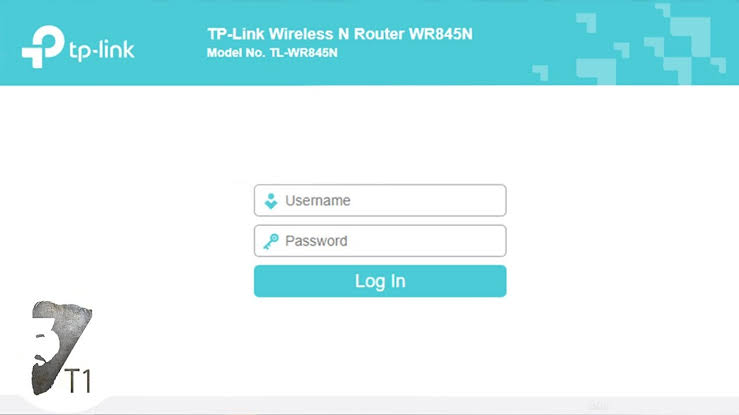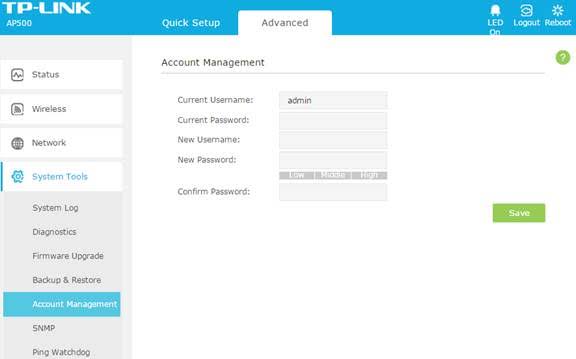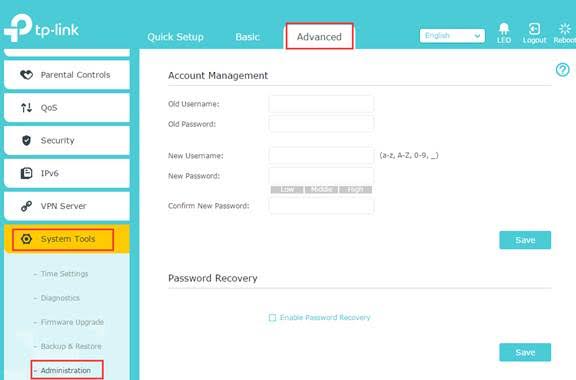TP Link Wifi Router Login - Default TP Link Router Username & Passwords
TP Link login is a reliable and straightforward process to access the wifi network settings. When logging in to the TP-Link router’s admin panel, users can update their WiFi name and password, manage parental controls, set up security protocols, and improve overall network activities.
Understanding how to log in properly ensures greater control over your internet connection. It is helpful when using a TP-Link router at home or for a small business.
This guide will help you know about the TP Link login steps, standard errors, and solutions for a stable and smoother experience.
How to Access the TP Link Login
Here is the step-by-step guide to easily log in to your TP-Link router’s admin panel. Whether you are configuring your router for the first time, it is the reliable way to enter the TP-Link IP address in the web browser without any interruption.
Steps to Access TP Link Login Page:
- Connect to the TP-Link Network
- Ensure your device, like a PC, laptop, or smartphone, is linked to the TP-Link router through WiFi or a LAN cable.
- Ensure your device, like a PC, laptop, or smartphone, is linked to the TP-Link router through WiFi or a LAN cable.
- Launch a Web Browser
- Open your favoured web browser, such as Chrome, Edge, Safari, or any other.
- Open your favoured web browser, such as Chrome, Edge, Safari, or any other.
- Enter the Default IP Address
- Type 192.168.0.1 or 192.168.1.1 in the browser address bar and press Enter.
- On the other hand, you can type tplinkwifi.net.

- Use Login Credentials
- Enter the default username and password, which are commonly admin/admin.
- If you changed the login credentials before, then enter the updated details.
- Enter the default username and password, which are commonly admin/admin.
- Access the Admin Panel
- After logging in, you can access the settings from where you can update the wifi name, password, security protocols, and other features.
- Save Changes and Reboot (If needed)
- When you change any setting, enter Save to confirm it and reboot the router if prompted.
To set up your Wi-Fi, check out 10.0.0.1 and optimize your router settings.
Other Brands
For more troubleshooting on pldt router login, check out our guide to resolve login issues with your PLDT router.
If you’re facing tenda router login issues, our post will help you access the admin panel and troubleshoot problems.
Learn how to log into zte router login and resolve any login issues you may encounter.
For help with globe at home router login, our guide offers troubleshooting steps for accessing the admin page.
Our converge router login guide provides solutions to login issues and how to set up the router.
Learn how to log into your smartbro login page with our troubleshooting guide.
If you’re using a huawei wifi router login, our post will guide you through common login issues.
How to Change TP Link Login Username and Password
It is essential to change the TP-Link login username and password to enhance security measures and protect your router settings from unauthorized access. Below are the easy-to-follow steps to change the default credentials.
Steps to Change TP Link Login Username:
- Connect your device to the TP-Link router via WiFi or an Ethernet cable.
- Open a web browser such as Chrome, Edge, Safari, or Firefox.
- In the browser’s address bar, type 192.168.0.1 or 192.168.1.1 and click Enter.
- Log in by entering the current login details.
- Go to System Administration settings.
- Search for the Username box and type a new, unique username of your choice.

7. Click Apply to confirm changes.
Steps to Change TP Link Login Password:
- After logging in to the router’s admin panel, navigate to System administration.
- Find the Password field.
- Type your old password and then set a strong new password.
- Enter the new password again for confirmation.

5. Click Save to update the password.
6. Log in again by using the new password to validate changes.
TP Link Default Login Credentials Complete Guide
When you first log in, you are required to enter the default credentials to access the TP-Link router’s admin panel. The default details are generally printed on the back of your router as a label or noted in the user manual.
Router Model | Default IP Address | Username | Password |
TP-Link (Most Models) | 192.168.0.1 / 192.168.1.1 | admin | admin |
TP-Link Archer Series | 192.168.0.1 | admin | admin |
TP-Link Deco Models | tplinkwifi.net | admin | admin |
TP-Link Older Models | 192.168.1.1 | admin | admin |
If you change the default credentials earlier, the default details don’t work; enter the new ones. If you forgot the updated password, then reset the router to the factory settings, and log in again by using the default details.
TP Link WiFi Network Setup and Security Tips
Setting up or configuring a TP-Link WiFi network ensures a reliable internet connection and greater control over your devices. Together with setup, using the proper security protocols such as updating the default password, turning on WPA3/WPA2 encryption, and managing firmware is essential to protect your wifi network from any misuse or fraud.
Through TP-Link routers, you can readily configure WiFi settings, handle linked devices, and increase security for a safe and smooth browsing experience. Changing the password regularly helps maintain privacy and improve network safety.
Steps to Change TP Link WiFi Password:
- Connect to Your TP-Link Router
- Connect your device to the TP-Link router using a wifi or a LAN cable.
- Connect your device to the TP-Link router using a wifi or a LAN cable.
- Open a Web Browser
- Open any preferred web browser (Chrome, Safari, Edge, or Firefox).
- Open any preferred web browser (Chrome, Safari, Edge, or Firefox).
- Enter the Router IP Address
- Type 192.168.0.1 or 192.168.1.1 in the address bar, then press Enter.
- Type 192.168.0.1 or 192.168.1.1 in the address bar, then press Enter.
- Log In to the Admin Panel
- Enter your current default credentials, which are commonly admin/admin.
Navigate to Wireless or WiFi Settings - Go to Wireless Settings, choose Wireless Security.
- Enter your current default credentials, which are commonly admin/admin.
- Change the WiFi Password
- Enter your new password in the Wireless Password box.
- Enter your new password in the Wireless Password box.
- Save the Changes
- Click Save, then reboot the router if needed.
- Click Save, then reboot the router if needed.
- Reconnect Devices
- Reconnect all your devices by using a new password.
TP Link Login via Different Devices
You can gain access to the TP Link login page from several devices, such as Windows PCs, MacBooks, Android phones, and iPhones. The login process is practically the same, but some device-specific steps may differ. Below are the simple steps for logging in from each device.
1. Windows PC/Laptop
- Connect the PC/laptop to the TP-Link router through WiFi or an Ethernet cable.
- Open a web browser and type 192.168.0.1 or tplinkwifi.net.
- Enter the default or updated login details to reach the admin panel.
2. MacBook
- Linked to the TP-Link router network.
- Open any browser and enter the TP-Link IP address.
- Log in using the correct username and password.
3. Android Phone
- Connect your phone to the TP-Link WiFi network.
- Open your preferred web browser and type 192.168.0.1 or tplinkwifi.net.
- Provide the default credentials to log in and update the router settings
4. iPhone
- Connect your iPhone to the TP-Link router’s WiFi.
- Open any browser and enter the router’s IP or URL.
- Give the correct login details to access the admin interface.
TP Link Login Using TP-Link Tether App for Easy Router Management
The TP-Link Tether App is an easy tool that permits users to administer TP-Link routers and range extenders straight from their mobile phones. It assists in changing WiFi settings, checking connected devices, updating firmware, and protecting the network. For TP Link Piso WiFi owners, the app is particularly beneficial as it makes it simple to control the vending system, handle pause time, modify rates, and observe active users without requiring a computer.
Users:
- Home Users: For changing WiFi names, passwords, and monitoring connected devices.
- Small Business Owners: To control TP-Link routers and ensure a secure, smooth network.
- Piso WiFi Vendo Owners: To efficiently control TP Link Piso WiFi settings, manage pause time, and see user connections.
- Parents: To turn on parental controls and address internet access for children.
Steps to Log In Using TP-Link Tether App:
- Install the TP-Link Tether App from Google Play or App Store.
- Download and open the app on your smartphone.
- Create a TP-Link ID.
- Link your phone to the TP-Link router’s WiFi network.
- Choose your router from the list of located devices.
- Enter the router’s admin default credentials.
- Handle settings like WiFi name, password, and connected devices.
Troubleshooting TP Link Login Issues and Easy Solutions
Many users find errors while accessing the TP Link login page due to many reasons, such as incorrect IP address, wrong username and password, or connection issues. By thes,e you cannot log in to the admin dashboard and are unable to manage network settings. Here are the most common problems and their solutions.
Incorrect IP Address
If you enter the incorrect IP address in the web browser, then this causes an error in logging to the TP-Link page, which results in the site not being able to load. Many TP-Link routers use 192.168.0.1, 192.168.1.1, or tplinkwifi.net. Monitor the router’s label to find the valid IP address and try again.
Device Not Connected to the Router
If your device is not linked to the router, it means the login page may not work unless you have a stable connection. And if you are connected to some other network or mobile data, then the issue also occurs. So you have to make sure that your device is connected to the TP-Link router before logging in.
Incorrect Login Credentials
If you enter the wrong default credentials, you will not be able to access the router’s admin panel. If you changed the details and forgot, then you will also face issues. So the only option is to reset the router to factory settings and use the default details again to log in.
Browser Cache or Compatibility Issues
Oftentimes, when there is stored cache or cookies in the browser, it causes errors and restricts the login page. So it is necessary to delete all the cache and cookies to access the login page, or try a different browser to solve the problem.
Router Firmware Problems
Old firmware may lead to login problems or prevent the router from functioning correctly. Go to the TP-Link support website, install the latest firmware version for your model, and renew it manually via the admin panel.
IP Conflict on Network
If two devices in the same network have the same IP address, you may find an error in accessing the router login panel. To solve this issue, you have to restart the router, allot a static IP to your device, and update the IP address from your device settings.
Router Not Responding
Sometimes, the router may be stuck or unresponsive due to hardware issues. Switch off the router, wait for a few seconds, and restart it. If the problem continues, then reset the router using the reset button on the back.
Firewall or Antivirus Blocking Access
Firewalls may falsely report or block access to the router’s IP address. Temporarily turn off your firewall or antivirus software and try to log in again. Enable it again after successful login for security measures.
Faulty Ethernet Cable or Port
If you are using a wired connection, a damaged cable or faulty LAN port can stop access to the login portal. Change the Ethernet cable or plug into another LAN port on the router.
Forgotten Customized IP
If you changed the router’s IP address earlier, but cannot remember, the default IP will not work. To find the valid IP, go to Command Prompt, type ipconfig, and check the Default Gateway. Enter that IP address in the browser to access the login page.
FAQs
Connect to the router, open a web browser, and enter 192.168.0.1, 192.168.1.1, or tplinkwifi.net, then log in with your default credentials to access the TP-Link router’s admin panel.
Log in to the router’s admin panel, navigate to Wireless Settings, change the WiFi password, and save changes.
It is assigned to accessing the TP-Link router dashboard using 192.168.1.1 to see or change the WiFi password.
Yes, by pressing and holding the reset button on the back of your router for 10 to 15 seconds to restore default settings.
Switch on the router, connect your device to the default wifi, and set up internet settings through the admin panel.
